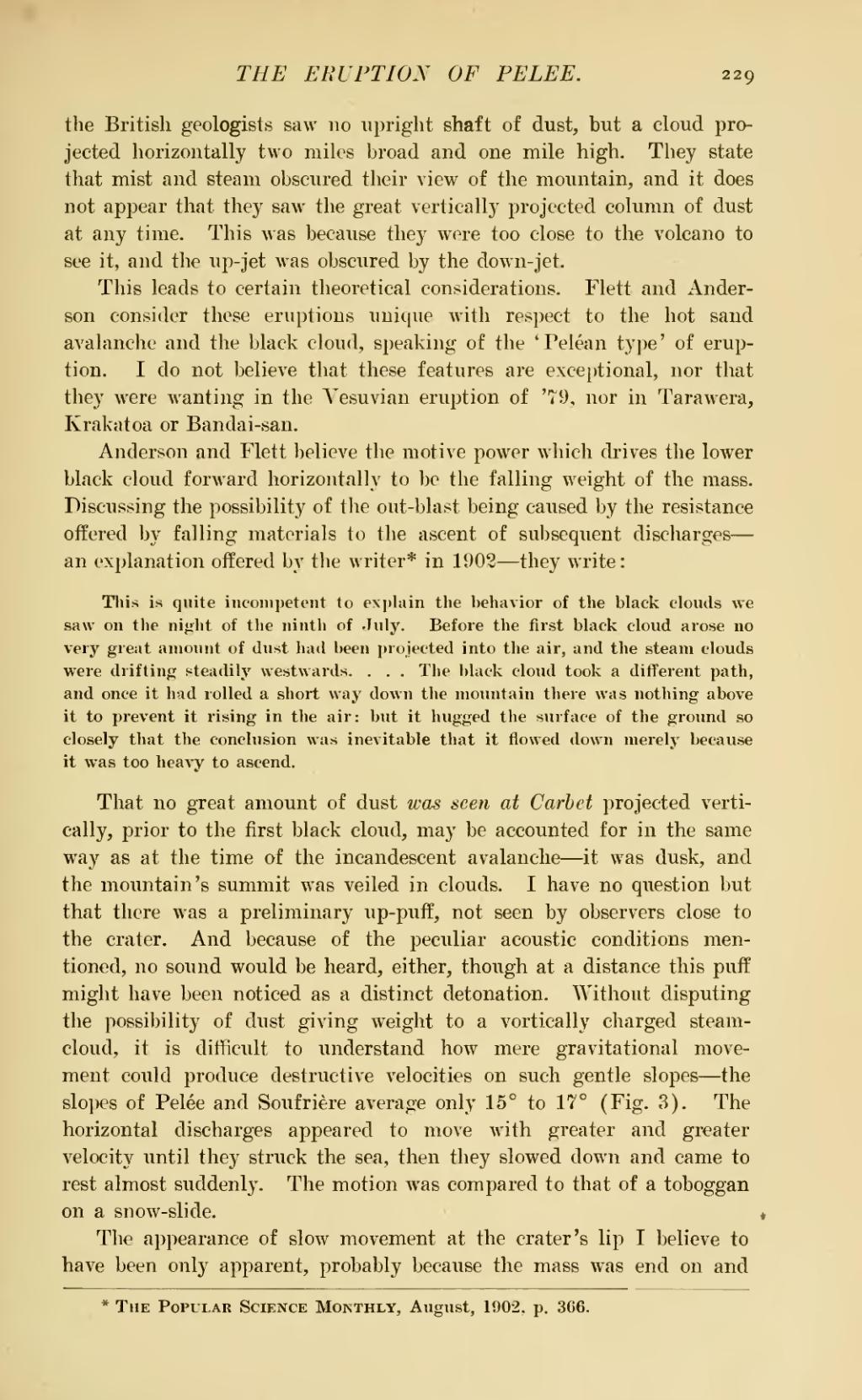the British geologists saw no upright shaft of dust, but a cloud projected horizontally two miles broad and one mile high. They state that mist and steam obscured their view of the mountain, and it does not appear that they saw the great vertically projected column of dust at any time. This was because they were too close to the volcano to see it, and the up-jet was obscured by the down-jet.
This leads to certain theoretical considerations. Flett and Anderson consider these eruptions unique with respect to the hot sand avalanche and the black cloud, speaking of the 'Peléan type' of eruption. I do not believe that these features are exceptional, nor that they were wanting in the Vesuvian eruption of '79, nor in Tarawera, Krakatoa or Bandai-san.
Anderson and Flett believe the motive power which drives the lower black cloud forward horizontally to be the falling weight of the mass. Discussing the possibility of the out-blast being caused by the resistance offered by falling materials to the ascent of subsequent discharges—an explanation offered by the writer[1] in 1902—they write:
That no great amount of dust was seen at Carbet projected vertically, prior to the first black cloud, may be accounted for in the same way as at the time of the incandescent avalanche—it was dusk, and the mountain's summit was veiled in clouds. I have no question but that there was a preliminary up-puff, not seen by observers close to the crater. And because of the peculiar acoustic conditions mentioned, no sound would be heard, either, though at a distance this puff might have been noticed as a distinct detonation. Without disputing the possibility of dust giving weight to a vertically charged steamcloud, it is difficult to understand how mere gravitational movement could produce destructive velocities on such gentle slopes—the slopes of Pelée and Soufrière average only 15° to 17° (Fig. 3). The horizontal discharges appeared to move with greater and greater velocity until they struck the sea, then they slowed down and came to rest almost suddenly. The motion was compared to that of a toboggan on a snow-slide.
The appearance of slow movement at the crater's lip I believe to have been only apparent, probably because the mass was end on and
- ↑ The Popular Science Monthly, August, 1902, p. 366.
